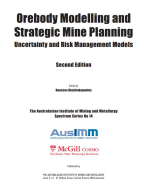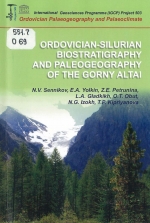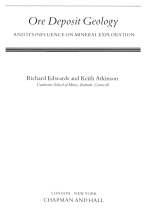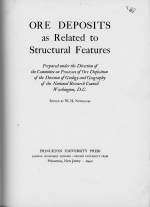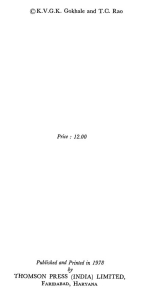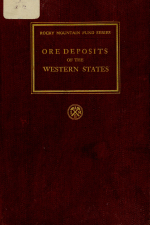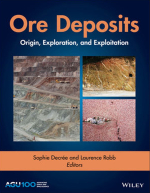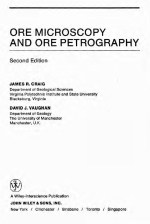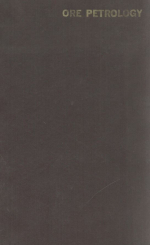Foreword
To honor the name of Waldemar Lindgren by this dedication of a volume on western ore deposits is altogether a natural and fitting tribute. For 46 years Geologist Lindgren has contributed, and contributed largely, to what the world knows of the metalliferous wealth of the Rocky Mountain region. As a Government geologist for more than a quarter of a century, he became the leader in that field of research, so that his painstaking methods of thorough field and laboratory study were made an essential part of the equipment of another generation of workers, who, in turn, added their contributions to the world's store of knowledge and of metals. Later, as a teacher in a great scientific and technical institute, Professor Lindgren has continued this leadership with an ever increasing circle of intellectual influence. This volume is at once proof of that leadership and tribute to the leader.
Equally appropriate is the linking of the name of the Rocky Mountain Club with this volume. That famous institution did not limit its interest to a simple topographic or orographic province but rather represented the traditions of the advancing western frontier and its visions of economic exploration and industrial development. As its successor in interest, the American Institute of Mining and Metallurgical Engineers has made a grant from the Rocky Mountain Fund for the publication of this volume as a research "of especial interest to the Rocky Mountain region." This use of income derived from the assets of an honored organization, which in so many ways fostered and furthered the interests of the West, will serve to perpetuate both the name and the spirit of the Rocky Mountain Club.
Waldemar Lindgren himself well illustrates one of the best phases of western development. Coming to the Rocky Mountain region as a young man, fresh from the schools of a country which has contributed to the world so many scientists and engineers, he applied his best energies to the tasks of the frontier. Success attended his efforts—not the spectacular success of a mining executive, but the more lasting success in the steady laying of foundations for a better understanding of the mineral wealth of the country by sharing his observed facts with others and passing along the torch of scientific truth. As opportunity offered, Lindgren widened his field of exploration and broadened his knowledge of ore deposits by adding Australia and South America, Mexico and Canada to his roll of scientific conquests.
It is this inspiring record of broad experience and personal attainment, both as investigator and as instructor, that makes the name of Lindgren so appropriate in its present setting; yet the enthusiastic cooperation of so many contributors to this volume is an expression of something more. " Guide, philosopher, and friend " aptly describes Waldemar Lindgren to all who have enjoyed the high privilege of close association with him. His genius has won our admiration, but it is the sincerity of intellect and kindliness of spirit that have bound to him a host of friends, some of whom have joined in this comprehensive tribute to the man and his chosen field of endeavor.


